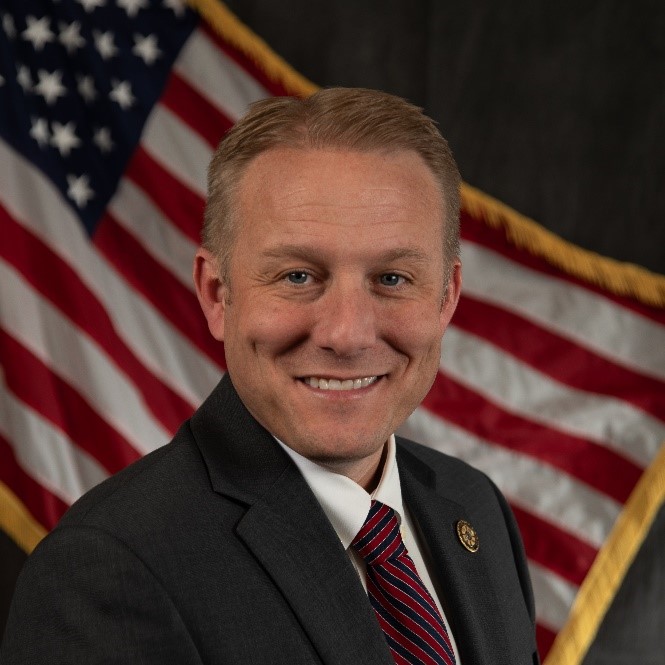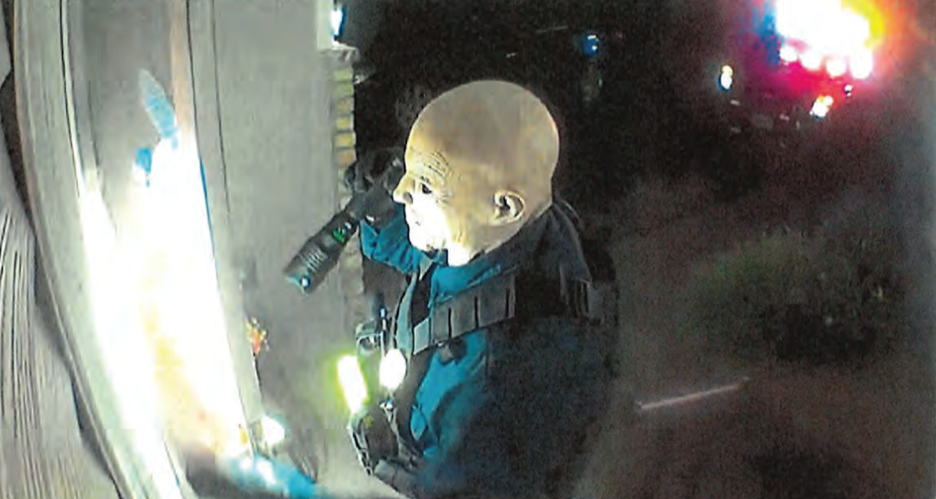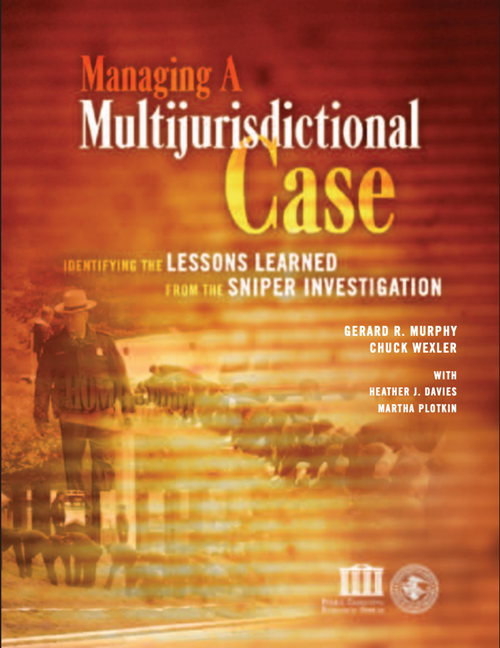|
June 21, 2025 Minnesota Bureau of Criminal Apprehension Superintendent Drew Evans discusses last weekend’s political assassination and the challenge of managing a multijurisdictional investigation
PERF members, Around 2:00 a.m. last Saturday morning, a man posing as a police officer shot Minnesota State Senator John Hoffman and his wife, Yvette, at their home in the Minneapolis suburb of Champlin. The man then drove to the home of a state legislator in nearby Maple Grove but found no one at the residence. He continued to the home of State Senator Ann Rest in New Hope but left after seeing a New Hope police officer drive by. At around 3:30 a.m., the man arrived at the Brooklyn Park home of State Representative Melissa Hortman, who served as the speaker of the State House of Representatives from 2019 until earlier this year. Two Brooklyn Park police officers arrived at the house shortly after and, as they exited their vehicle, the man fatally shot Rep. Horman and her husband, Mark, before running away. Saturday afternoon, the Minnesota Bureau of Criminal Apprehension (BCA) released the suspect’s name, Vance Boelter, and his photograph. A manhunt ensued all weekend. On Sunday, law enforcement received a tip that Boelter was seen about 50 miles southwest of Minneapolis, and he was taken into custody that evening. On Wednesday I spoke with Drew Evans, who has led the BCA since 2015. Before joining the BCA as a special agent in 2005, Superintendent Evans was a police officer in White Bear Lake, Minnesota. He has a law degree from William Mitchell College of Law. Superintendent Evans discussed how the manhunt unfolded from his perspective and lessons he’s learned while responding to this incident. Chuck Wexler: How does the Bureau of Criminal Apprehension fit into the criminal justice system in Minnesota? Superintendent Drew Evans: We’re the state’s criminal investigative agency. We have three large divisions—our investigations division; our forensic science service, so the state crime lab; and the CJIS function for the state, which is called Minnesota Justice Information Services and has about 30 forward-facing databases that we maintain. 
Our investigations division is there as a resource at the request of a local agency, so we have a homicide section, as well as narcotics, human trafficking, predatory crimes, and child exploitation cases. Our newest section is a large financial crimes fraud section. We also have a force investigations unit that is now mandated to do all officer-involved shooting investigations where there is a death. We were called to provide assistance with this particular case on the homicides and then the officer-involved shooting. Wexler: When were you first notified about this case? Superintendent Evans: I was notified not long after Senator Hoffman was shot. Nothing was really known at that time. There weren’t a lot of specifics, other than that he had been shot [along] with his wife. Then events unfolded from there, and we knew this was a larger targeted attack. Wexler: What happened next? Superintendent Evans: Senator Hoffman and his wife were transported [to the hospital]. Thankfully they’re going to survive, but they were both shot eight or nine times. That occurred in Champlin, Hennepin County.
The suspect knocking at the Hoffmans’ front door. Source: U.S. Attorney Some of this we learned after the second shooting, but there was another incident that then occurred in New Hope, where a police officer encountered [the shooter] in the area of a senator’s home. This officer knew Senator [Ann] Rest, who lived in town, so [the officer] was going to drive by the residence. She had heard the state was going to put resources out, which wasn’t exactly accurate at that time. She encountered this individual, pulled up alongside him, and didn’t get his attention. She assumed it was state patrol and continued on to the residence. Everything was okay, then she circled back to check on the vehicle and it was gone.
Image of the suspect’s vehicle from New Hope Police Department dashcam footage. Source: U.S. Attorney The vehicle also went to Maple Grove, which is another Hennepin County suburban city, to the home of a representative there. Finally, he went to Brooklyn Park, where he committed the assassination. In Brooklyn Park, a sergeant was getting off shift. Because Representative Hortman was the high-profile speaker of the house, they were used to providing extra patrols at her house. [The sergeant] told two officers, “Why don’t you go check on that?” That’s when they encountered the individual there. In Minnesota we do not provide any security for any representatives or senators, and we really need to ensure the local jurisdictions know exactly where everybody lives, and there’s a protocol for a situation like this. These were enterprising young cops working the midnight shift who proactively went out to these residences. Wexler: What happened when the officers got to the house in Brooklyn Park? Superintendent Evans: This individual had pulled into the driveway and activated emergency lights. They saw him, and you can imagine the confusion, because they’re the Brooklyn Park Police Department and there’s a squad car there with lights activated. This is where their intuition took over. They said, “We don’t approach a house like that. Nobody would be doing that. What’s going on here?” They figure out he’s actually outside the residence talking to [Rep. Hortman and her husband]. They’re still alive at this point. We’re still piecing together exactly what happened, but [the officers] started to approach and gunfire erupted. [After shooting Rep. Hortman and her husband], the individual fled. I give [the officers] lots of credit. They did the right thing and really tried to save [Rep. Hortman and her husband’s] lives, as opposed to pursuing [the individual]. They immediately went in to rescue and removed [Mark Hortman] from the house. They started performing CPR on scene. When they got resources there, they went back in and pulled [Rep. Hortman] out of the house. Unfortunately, both were shot multiple times and died. He escaped through the back of the house and kind of got in the wind fairly quickly from there. There are a lot more resources in suburban agencies than small-town Minnesota, but there still aren’t that many people on at 3:30 in the morning, which is when these shots were fired. Wexler: What was your agency’s role at this point? Superintendent Evans: At this point, we were notified and know we have targeted attacks going on. There’s no other way to explain it at this point. We were on calls and working with our partners. It was still very chaotic, and it took a couple hours to get organized and figure things out. We became one of the key partners, with Brooklyn Park [Police Department], Hennepin County Sheriff’s Office, the FBI, and other partners. Everybody says you always have to have one command post, but that’s not always 100 percent accurate. We needed an operational command post, which was in Brooklyn Park. Then we activated the state emergency operations center to be the place to handle political issues. I spent most of the morning there while my teams were out working with Brooklyn Park, the FBI, and others. The manhunt was three-pronged, with Brooklyn Park, the FBI, and the BCA taking over to run that manhunt. Then dozens of jurisdictions were folded into that to work together on one team. Wexler: Once you knew the individual’s name, what went into the decision about whether you should release that name to the public? Superintendent Evans: The tension I think we always have in any high-profile case is when to release the name and picture and when not to do that. We had his name and we had two original leads. One was a location [where] we knew he stopped, and Minneapolis police were executing a warrant on a house that he rented a room from. Second, we had surveillance [footage] of him that ultimately turned out to be him purchasing a car from another individual. That afternoon, once we ran down those leads and needed the public’s help, we decided to release his name and picture.
Images of Boelter caught by surveillance cameras and released by investigators. Source: U.S. Attorney When I think through these situations, I consider whether we have a location where we think they are, and releasing that information might provide assistance to the individual or a significant danger to the community. And do we have any technological means we’re using to track this person. Once we know who they are and don’t feel confident on a location, it’s time to get that name and picture to the public for their safety and assistance. In this case, we had hundreds of cops in the area, but it was a citizen recognizing him on a trail camera and calling it in that quickly moved our team to the area and got them in a place to get him. And once you decide to release the name, you have to be contemplating how you’ll handle the tips and leads. We always have a tip line in place, but we needed to assign more resources to it. By the end of the weekend, we had over 800 tips. Wexler: What are some of your takeaways from this incident? Superintendent Evans: First of all, with how decentralized policing is in the United States, nobody can handle something like this by themselves. Those ongoing, intentional relationships matter. I know my [FBI special agent in charge] well, I know the Brooklyn Park police chief well, so we can navigate everything. From my perspective, there were three components of this case. One was the notification. We have 201 legislators in Minnesota, as well as other political officials. I think our information to them was disjointed and could be improved in the future. What we knew grew throughout the day. We asked the FBI to handle [notifying political officials], and they did a marvelous job. But we had to pivot because everybody was so scared that I had legislators calling me saying, “Drew, FBI agents are calling. Is this real?” So we had to pivot and get a BCA agent or local [law enforcement officer] attached to them so they trust it is coming from us. The second component was the manhunt. The third component was the investigation. I kept talking to our teams about making sure we weren’t losing sight of the investigation. We’re not just trying to locate this guy, which is the priority, but also starting to gather the evidence to make sure we have a prosecutable case going forward. One thing I’ve taken a lot of heat for is releasing information about him having all these pamphlets in his car for these “No Kings” rallies happening [last Saturday] across the United States. We released that information and took some heat from people saying that we were trying to discourage people from going there. We had no idea what [his possession of the pamphlets] was about, but I can tell you that from what I know, I don’t think he would support the “No Kings” rallies. In Minnesota, we discouraged people from attending and tried to get the organizers to cancel the rally. They didn’t cancel it. We still had 20,000 people there. Thankfully, this individual was in flight, not fight, mode, or we could have had some issues. We had a robust security plan in place, but it was something we needed to look at. Our local law enforcement that were not involved in this manhunt expressed some frustration that there wasn’t a regular cadence to sharing information, and that’s a lesson learned out of this. We should set up statewide calls, even when we come on the call and say, “We don’t know.” We said we’d set up calls when there was a real update to share, but the rumors were going nuts across the state. [Local law enforcement] would get a call from a legislator saying, “I heard this” or “The FBI contacted me.” Then [local law enforcement] was in the dark. So you need to create a method for them to ask us, as the investigators, questions and help dispel rumors. Wexler: Is there anything else you’d like to add? Superintendent Evans: We need to continue thinking collectively about behavioral threat assessment management teams. These threats are coming fast and furious. We have a new state team that’s designed to be a partner with local teams for threat assessment and management. We’ve opened up over 100 cases ourselves just this year. That’s only two agents and an analyst, and we just don’t have the capacity. These threats are so nuanced. If this guy had been on the radar, he would’ve been a classic example. He wasn’t. We had no information on him. But I think it’s something all of us should be thinking about going forward. We don’t have, “I’m going to kill you.” But, as you’ll see as it comes out, this guy bought dozens and dozens of guns in the last six months and held some pretty odd, kind of conspiratorial beliefs. If he got on the radar, somebody should have taken a look at him. This case reminded me of a killing spree that occurred nearly 23 years ago, in October 2002, in the Washington, D.C., and central Virginia area. The attacks came to the public’s attention after five fatal shootings occurred in less than 24 hours in Montgomery County, Maryland, a Washington, D.C., suburb that typically sees fewer than 20 homicides per year. The killings, which came to be known as the D.C. sniper attacks, continued for more than three weeks, with murders occurring in Prince George’s County, Maryland; Washington, D.C.; and Fairfax County, Prince William County, Spotsylvania County, and Hanover County, Virginia. The attacks finally ended when two men—John Allen Muhammad and Lee Boyd Malvo—were arrested at a highway rest stop in Maryland. The arrests happened early in the morning, and that same day I received a call from Assistant Attorney General Deborah Daniels, who led the U.S. Department of Justice’s Bureau of Justice Assistance (BJA). Deborah had extensive experience as a prosecutor, having previously served as U.S. Attorney for the Southern District of Indiana, and she thought the sniper case raised a number of interesting issues about managing a multijurisdictional case. BJA asked PERF to review the investigation into the attacks and identify lessons learned. PERF made this a top priority, and we found some of the same issues that appear to have occurred last weekend in Minnesota. When an investigation spans multiple jurisdictions, who is in charge? How do agencies share information? What is the role for federal agencies? How do agencies communicate with the public? When should information, such as the names of suspects, be shared with the public? PERF addressed these issues and more in our 2004 report Managing a Multijurisdictional Case: Identifying the Lessons Learned from the Sniper Investigation. Thanks to Superintendent Evans for taking time out of a busy week to share his experiences with our members. And I greatly appreciate all the excellent work done by his agents and the other local, state, and federal law enforcement officers who responded to the shootings in Minnesota. Capturing this individual in less than two days is impressive work. Best, Chuck |




